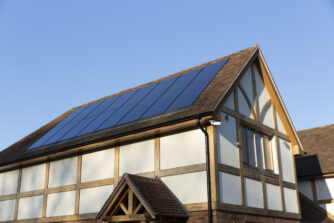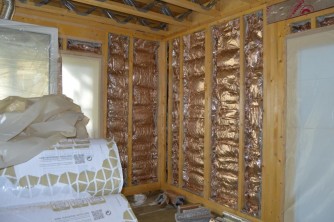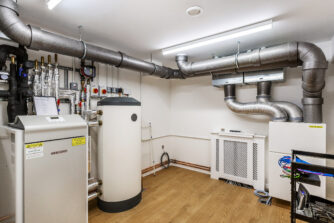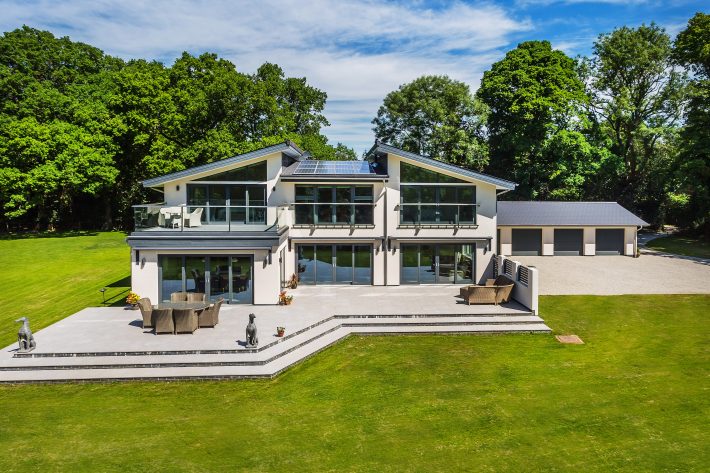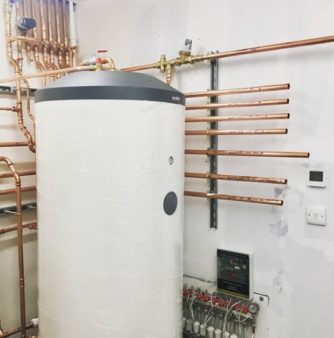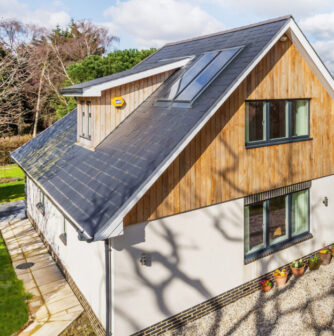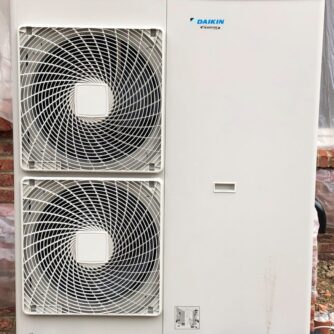Scandia-Hus are passionate about building eco-friendly, sustainable homes for the future. We believe that energy-efficient design is essential in any new property, with benefits for both the homeowner and the environment. To achieve this with your self build careful consideration should be given to the following:-
Timber Frame Structure:
We use the best slow-grown Scandinavian, PEFC-sourced, sustainable timber, harvested under a forestry management policy of long-term renewal. Building with timber sourced from sustainable forests is an environmentally-friendly choice for the construction of your home; it is renewable and helps to create an air-tight structure. Combining a timber frame with triple glazed wooden windows ensures a thermally efficient home, especially if designed with generous expanses of glass, as this is the highest performing part of the window.
Insulation and Air Tightness:
By incorporating high levels of insulation and adopting air-tight principles Scandia-Hus homes achieve exceptional thermal values, which is why they are renowned for their energy-saving properties. It is vitally important to make new homes as airtight as possible; uncontrolled air migration (in or out) is a significant route for heat loss even in a well-insulated property. High levels of insulation and airtightness are number one on the sustainability priority list and, as the financial and environmental costs of energy continues to rise, we are confident that our methods are compatible with a cleaner and greener future.
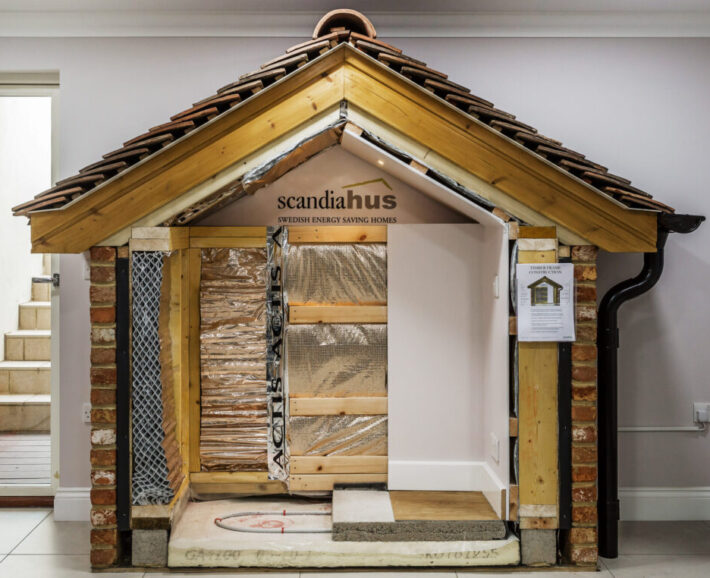
Orientation:
Follow the sun to utilise solar gain. Your new home should be designed to capture solar energy and minimise heat loss. Maximise south-facing windows, position your home to ensure sunlight floods into living spaces and place non-habitable rooms on the north side of the house.
Efficient Floorplans:
Assess your space requirements. It is important to build a home that reflects how you live and your real use demands, designing rooms with excess square metreage will not only affect the total construction cost but also its carbon output. Design wet rooms in close proximity to one another to minimise pipe run lengths, this will reduce material costs as well as improving operational efficiency. Include air-locks at the main external doorways, this will avoid unnecessary heat loss when entering or exiting the building.
Renewable Energy
The majority of our customers incorporate renewable energy into their homes. We have vast experience of this type of technology and would be pleased to assist and advise on any renewable energy system you may be considering.
Solar Thermal: Solar Thermal is a very effective means of heating hot water for domestic use. It can be used all year round but, understandably, the best results are in the summer when sunny days are more likely to occur. It is quite possible to survive from May to October using only solar-heated water. It works very well for domestic hot water heating and it is possible to use it to assist with space heating. There are two main types used in the UK – evacuated tubers which are best suited to our latitude and flat place collectors which look better but are not quite as efficient. Do remember to size panels according to siting, occupancy and spring/autumn solar gain.
Solar Photo Voltaics (PV): Solar Photo Voltaics are often seen powering road sign lighting, navigation buoy lights and trickle chargers on boats. Each silicon-based cell converts sunlight directly into low voltage D.C. electricity using semi-conductor technology. They are usually set out as roof arrays, covering a minimum of 4 square metres. They generate electricity when there is daylight and their output varies depending upon light intensity. For those customers who wish to use them, there are companies who actually produce PV roof slates, tiles and shingles for partial or whole roof covering, although they are more expensive than frame-mounted PV panel arrays.
Heat Pumps: A heat pump works by extracting low-grade heat from a source (usually the ground or air), this is then circulated to the heat pump by a refrigerant. Once in the heat pump, the heated refrigerant is compressed, raising its temperature and, as it expands, the resultant heat is transferred to a hot water storage vessel or directly to heating the pipes. The refrigerant is returned to the low-grade heat source to take in more heat. Additional heat input is sometimes required in order for the hot water to reach acceptable temperatures. Most heat pumps require electricity to power them. The usual method of harvesting low-grade heat from the ground is via a pipe buried below ground in the garden, the alternative is to drill boreholes, although they are more expensive. Air source heat pumps are popular where there is insufficient ground to bury the pipes, however, their seasonal performance can not match that of ground source types. A company we work regularly with, Nicholls Boreholes supply and install ground source heat pumps in many Scandia properties. For more information, please visit their website.
Biomass: Biomass is, in essence, ‘wood-burning’. Wood is a renewable resource that is, in effect, stored solar energy. If the dried wood is burned at high temperatures, the stored solar energy is converted to heat, whilst very little CO2 is emitted. High-efficiency wood stoves and boilers are required. Burning wood pellets is the best, but wood chips or logs can be used.
Wind Turbines: Ideally, wind turbines should be mounted on masts well above and away from local obstructions in locations with undisturbed airflow and sufficient average wind speed to spin the blades above minimum operating rotation. The generation is mounted at the top of the mast, directly behind the blades. The resulting electricity output can be significant and can provide a considerable contribution to annual electricity consumption. The selection of a wind turbine to generate electricity will not just be an appraisal of the technology, it will also involve site assessment, visual appreciation, neighbour opinion and planning department reaction.
If you have any questions or would like to know more about renewable energy technologies, please contact us – sales@scandia-hus.co.uk

